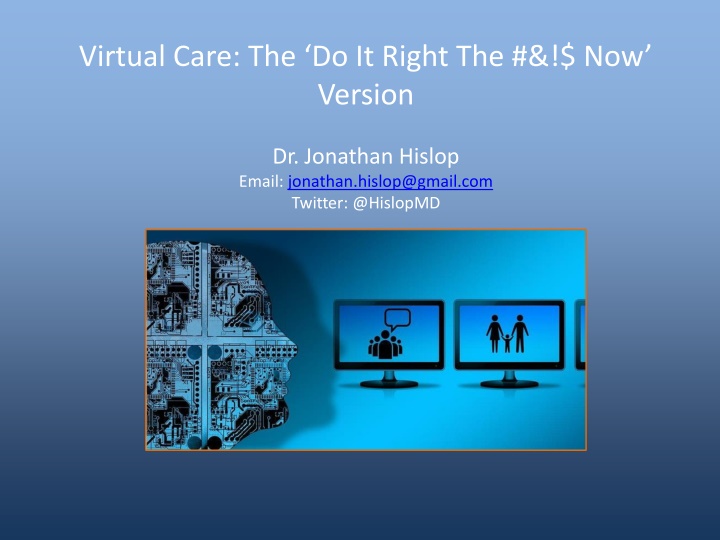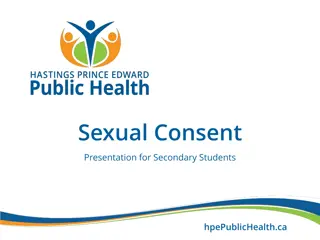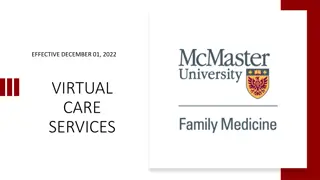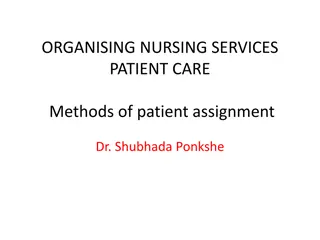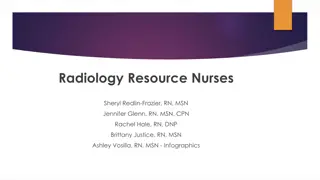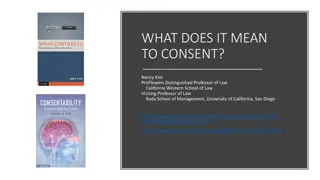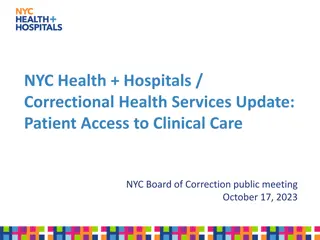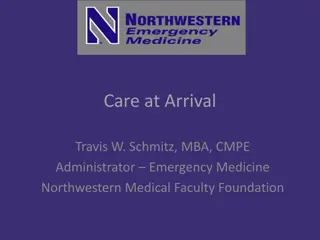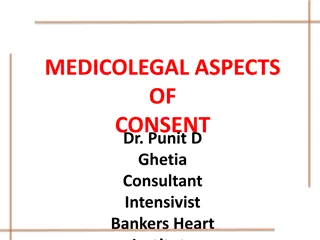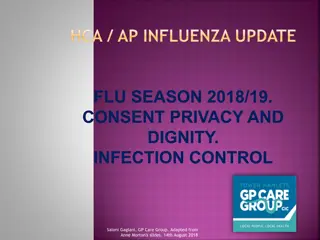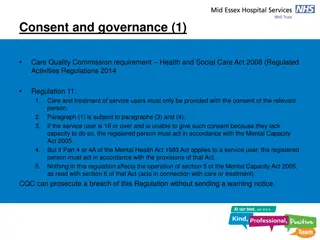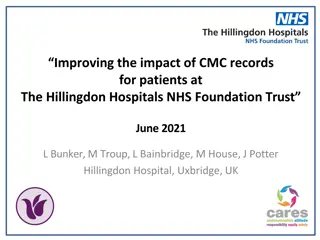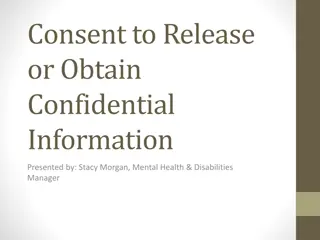Virtual Care: Ensuring Proper Consent for Patient Information
This comprehensive guide covers the essential aspects of obtaining consent for patient information in virtual care, including recommendations from CPSBC, CMPA, OIPC, and privacy guidelines. Learn about different types of consent, privacy laws, and best practices to safeguard patient data securely.
Download Presentation

Please find below an Image/Link to download the presentation.
The content on the website is provided AS IS for your information and personal use only. It may not be sold, licensed, or shared on other websites without obtaining consent from the author.If you encounter any issues during the download, it is possible that the publisher has removed the file from their server.
You are allowed to download the files provided on this website for personal or commercial use, subject to the condition that they are used lawfully. All files are the property of their respective owners.
The content on the website is provided AS IS for your information and personal use only. It may not be sold, licensed, or shared on other websites without obtaining consent from the author.
E N D
Presentation Transcript
Virtual Care: The Do It Right The #&!$ Now Version Dr. Jonathan Hislop Email: jonathan.hislop@gmail.com Twitter: @HislopMD
Overview What is the minimum consent I need MOA Workflow Medeo demo Doxy.me demo Other choices (very briefly) Skype, Facetime, Zoom, Livecare Clinical Workflow Billing
Patient-oriented Family Medicine in the near future today Patient Health Concern E-Communication Asynchronous Text Digital Tech Monitoring Artificial Intelligence mHealth / eHealth Physical Exam Needed? Yes No In Office Visit Virtual Care Response Follow Up Needed? Yes No
Consent 3 groups that you care about: CPSBC CMPA OIPC
Consent: CPSBC https://www.cpsbc.ca/files/pdf/PSG-Emailing-Patient-Information.pdf For video consults, have some form of consent noted in the chart. To email clinical information to a patient, you need more express, informed consent. Suggestion: use email for non-clinical information (practice announcements, MOA communications), and video/phone for clinical information.
Consent: CMPA (cont) https://www.cmpa-acpm.ca/en/advice-publications/risk-management-toolbox
Privacy and Security: OIPC OIPC: Office of the Information and Privacy Commissioner of BC BC Physician Toolkit (BC Doctors, and Doctors Technology Office): https://www.doctorsofbc.ca/sites/default/files/ptv3.0_full_document.pdf The 1-page version: https://www.doctorsofbc.ca/sites/default/files/privacy_toolkit_fact_sheet.pdf Video consult 3-page document: https://www.doctorsofbc.ca/sites/default/files/dto_health_technology_guide _-_videoconferencing_privacy_and_security.pdf.pdf For video consults you need implied consent Privacy: Community physicians bound by PIPA (Personal Information Protection Act) Health Authority/Facility physicians bound by FIPPA (Freedom of Information and Protection of Privacy Act) Main difference: FIPPA information must be kept on Canadian servers / cannot pass through other countries.
Consent: OIPC "There are two types of consent: express and implied. Patients provide express consent when they agree, verbally or in writing to the collection, use or disclosure of their personal information for a particular purpose. Express consent is necessary for research purposes, education purposes, or other purposes that are not related to the patient s care. Implied consent on the other hand is deemed to be given Where the purpose of collection, use, or disclosure would be considered to be obvious to a reasonable person, and where the individual voluntarily provides the information. The collection, use and disclosure of personal information for direct health care purposes in BC is usually authorized by implied consent. Implied consent can also be provided by giving a patient the opportunity to opt-out (e.g. when informing the patient about a referral, you provide them with a reasonable time to decline). "
Consent: Bottom Line If the patient calls your MOA, and is offered a video appointment, and they agree, and they provide their email for this purpose, they have clearly provided implied consent. Have MOA send themselves a message in the chart, or make some note that patient consented to video consults . If you currently have no emails in your chart, and you start adding them now, consider that anyone who has their email in the chart gave consent.
MOA Workflow Get Consent AND ** eMail addresses ** (Create an email list) Inform the Practice Use e-mail for all sorts of teaching and practice announcements Patients phone in for appointments, and MOA tries to make it a video one Patient to sign-in to the video platform 5 minutes prior to appointment Recommend for the first few days, MOA calls patient to remind them to do so (like physically showing them into the room) they will be able to stop this after a time as patients will learn Warning patients can actually get more impatient on video as they sometimes have no idea if they are connected properly, use emails to teach the whole practice about this
Virtual Care: Patient Suitability Almost everything can actually be done by video! Main issue will be dealing with patients who have new/worsening symptoms In the current environment, reasonable to do everything by video first, and bring in select patients who require a physical exam
Demos Medeo Doxy.me Other options: Skype Facetime Livecare
Billing ($$) TeleMedicine / Telehealth: General Visit 13037 (currently $34.44) Counselling Visit 13038 (currently $58.46) Email/Text/Relay: 14078 Pays $7 Max 200/yr total, regardless of your practice size Max 1/day per patient Must provide some sort of clinical advice No refills, appointment reminders, specialist appointment info etc The advice must appear in the chart (within a message is adequate if that is seen in the clinical chart flow)
Communicating with patients: Use a Webapp MailChimp (www.mailchimp.com) Free if you have < 2000 people (patients) Mailchimp 101: very short but excellent videos that tell you how to get started. https://mailchimp.com/resources/mailchimp-101/ FormSite (https://www.formsite.com/) $50 for a form for up to 2500 people Can be exported as a CSV file into Excel There are certainly other options out there too
Clinical Workflow Have 2 computers if you can 1 for video 1 for EMR Start video call Write notes as you go, create forms, prescriptions etc Send tasks to MOA to fax forms, prescriptions etc Both Medeo and Doxy.me (paid version) allow you to transfer files/PDFs to the patient if you are able to get them out of the chart. Be sure to delete them off your computer!
